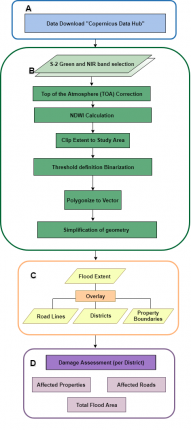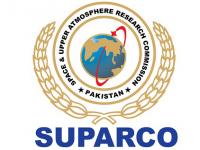The objective of this practice is to identify the extent of a flood as well as the affected infrastructure such as roads and settlements and impaired areas of interest for example agricultural regions. This information can be used by disaster management agencies and other stakeholders to undertake the rescue and relief activities in affected areas.
The practice developed by the “Space Application Centre for Response in Emergency and Disaster” of SUPARCO (Pakistan) was initially applied to the flood event in Punjab (Pakistan) in July 2015. Thereafter, it was used annually for river monitoring during monsoon season. The extraction of the flood extent was applied to the river Jhelum upstream of Trimmu Barrage, while the map generation covered the River Indus and its tributaries in Punjab, Pakistan.
For this Recommended Practice the methodology was applied to the Fitzroy River around the city of Rockhampton in Queensland, Australia. In April 2017, the central city of Queensland was inundated by flood waters. The water rose over several days until its peak that was captured by the processed satellite imagery from 8 April 2017.
Part A of this Recommended Practice can be applied to most flood events around the globe. The flood inundation is extracted from Sentinel-2 visible bands at 10 meters spatial resolution. The method can therefore only be applied for satellite scenes with little to no cloud cover.
Part B then maps and quantifies the flood affected and damaged areas and can be applied to all shapefiles that are being included in the analysis.
This recommended practice is applicable to Sentinel 2 data, for other data sources, such as those provided by Google Earth, you can find further information on Earth Lab by the University of Colorado.


